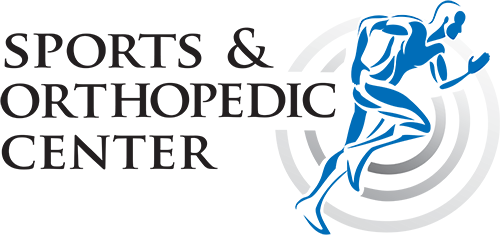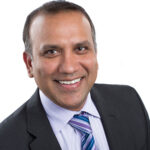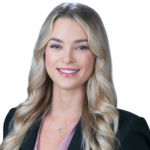ORTHOPEDIC SHOULDER – SURGICAL & NONSURGICAL OPTIONS
As we age our shoulders become vulnerable to health problems and pain. Our team of orthopedic shoulder specialist will help you get back to your physical activities as quickly as possible.
Your shoulders are the base of your freedom, mobility and independency. From driving a car, lift groceries, do housework, pick up a child or hugging a love one, your shoulders are there always for you! Shoulder pain or injuries like a rotator cuff tear or shoulder dislocation can be exhausting, painful and definitely will impact your daily routines and normal activities.
ABOUT OUR SHOULDERS
The shoulder is a ball-and-socket joint and has the greatest range of motion of any joint in the body. Because of this mobility, it is at risk for injury or degenerative problems. The bones of the shoulder are the humerus (upper arm bone), clavicle (collar bone), and scapula (shoulder blade). The head of the humerus bone (the ball) is lined with cartilage that glides over the shoulder socket (also known as the “glenoid cavity”). The clavicle attaches the shoulder to the rib cage and holds the shoulder out from the body. The scapula is a large triangular bone located on the back side of the upper body, and it is connected to the clavicle through the acromioclavicular (AC) joint.
In the shoulder socket, the humerus sits like a golf ball on a tee, supported by a complicated arrangement of muscles, tendons, and ligaments.
The rotator cuff is a group of tendons that attaches four shoulder muscles to the upper arm. These tendons help keep the humerus bone in place within its shallow socket and ensure that the arm moves freely within the joint.
Some of the most common injuries that are frequently treated by our orthopedic shoulder specialist at Sports & Orthopedic Center include:
-
- Rotator cuff tear
- Shoulder dislocation
- Frozen shoulder
- Biceps tendonitis
- AC Joint Arthritis
- Impigment
- Slap Tear
SHOULDER TREATMENT OPTIONS NON- SURGICALS:
There are some non-surgical and conservative therapies to consider for the treatment of a rotator cuff tear or shoulder pain:
- Rest: The doctor may recommend limiting activities that involve overhead motion and resting the shoulder to allow the tissue to heal.
- Medications: Anti-Inflammatory medications may reduce pain and inflammation associated with this injury.
- Injections: Corticosteroid injections to the affected portion of the shoulder can provide short-term pain relief and reduced inflammation, when medication is ineffective or not an option.
- Physical Therapy: Certified Physical Therapists work closely with doctors to create an individualized program to maximize healing and restore function, strength and mobility.
ARTHROSCOPIC REPAIR – MINIMALLY INVASIVE SURGERY
Thanks to ongoing improvements made by technology leaders like Smith & Nephew, arthroscopic surgery is now accessible to more people than just professional athletes. In fact, active patients all over the world have experienced the benefits of minimally invasive surgical procedures. Through an incision the width of a straw tip, your surgeon is able to insert an arthroscope that allows him or her to inspect your joint and locate the source of your pain. The arthroscope can also help visualize tears or other damage that may have been missed by an X-ray or MRI. Your surgeon will then make one or more small incisions to accommodate the instruments used to repair the shoulder. These instruments can shave, trim, cut, stitch, or smooth the damaged areas.
WHAT TO EXPECT DURING AN ARTHROSCOPIC PROCEDURE
Arthroscopic shoulder surgery is often performed in an outpatient surgery center, which means no overnight hospital stay is required. You report to the surgical center in the morning, undergo the procedure, and – following a recovery period under the care of medical professionals – return home later in the day. Postoperative Care After surgery, you will be transported to the recovery room for close observation of your vital signs and circulation. You may remain in the recovery room for a few hours.
When you leave the hospital, your arm will be in a sling. The sling should be worn for the amount of time recommended by your physician. Rehabilitation Steps for rehabilitation following rotator cuff surgery and instability repair vary from physician to physician. To learn what activities will be involved in your own rehabilitation, consult your doctor.
Minimally invasive shoulder surgery is a positive measure to regain the active lifestyle that a painful shoulder is preventing. Arthroscopic shoulder surgery can:
• Relieve pain.
• Improve joint stability.
• Repair tears and damage.
• Maximize quality of life.
• Optimize activities of daily living.
All information provided on this website is for information purposes only. Every patient’s case is unique and each patient should follow his or her orthopedic shoulder specialist specific instructions. Please discuss nutrition, medication and treatment options with your doctor to make sure you are getting the proper care for your particular situation. If you are seeking this information in an emergency situation, please call 911 and seek emergency help.
SCHEDULE AN APPOINTMENT
Common Orthopedic Conditions & Injuries

Before my shoulder replacement with Dr. Manish Gupta, I had limited movement in my arm. It was painful to get dressed and drive. After surgery, I returned to normal movement in 2 weeks! At 5 1/2 weeks, I was driving and doing everything else I couldn’t do before and had no more pain. My experience with SOC was excellent and having the procedures was one of the best decisions I could have made.
Judith C.






